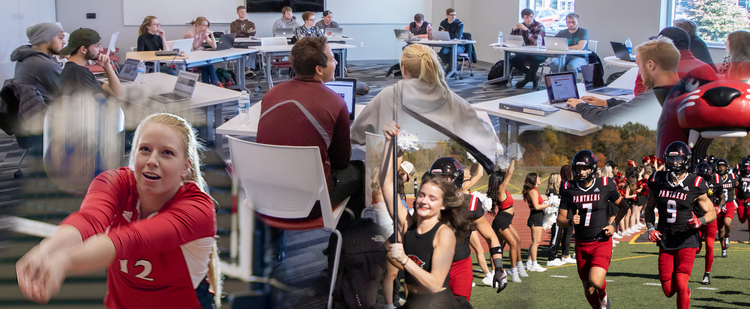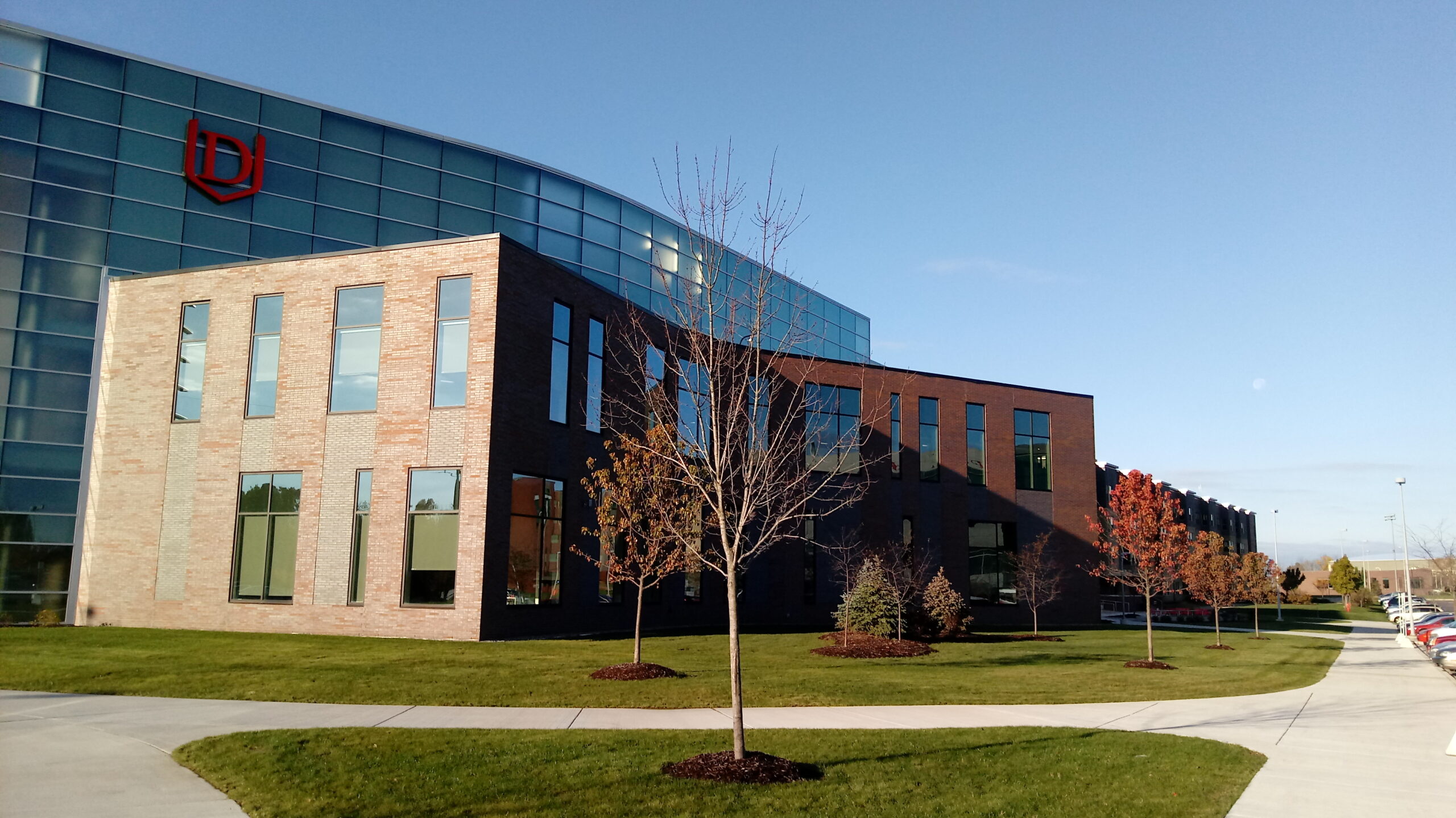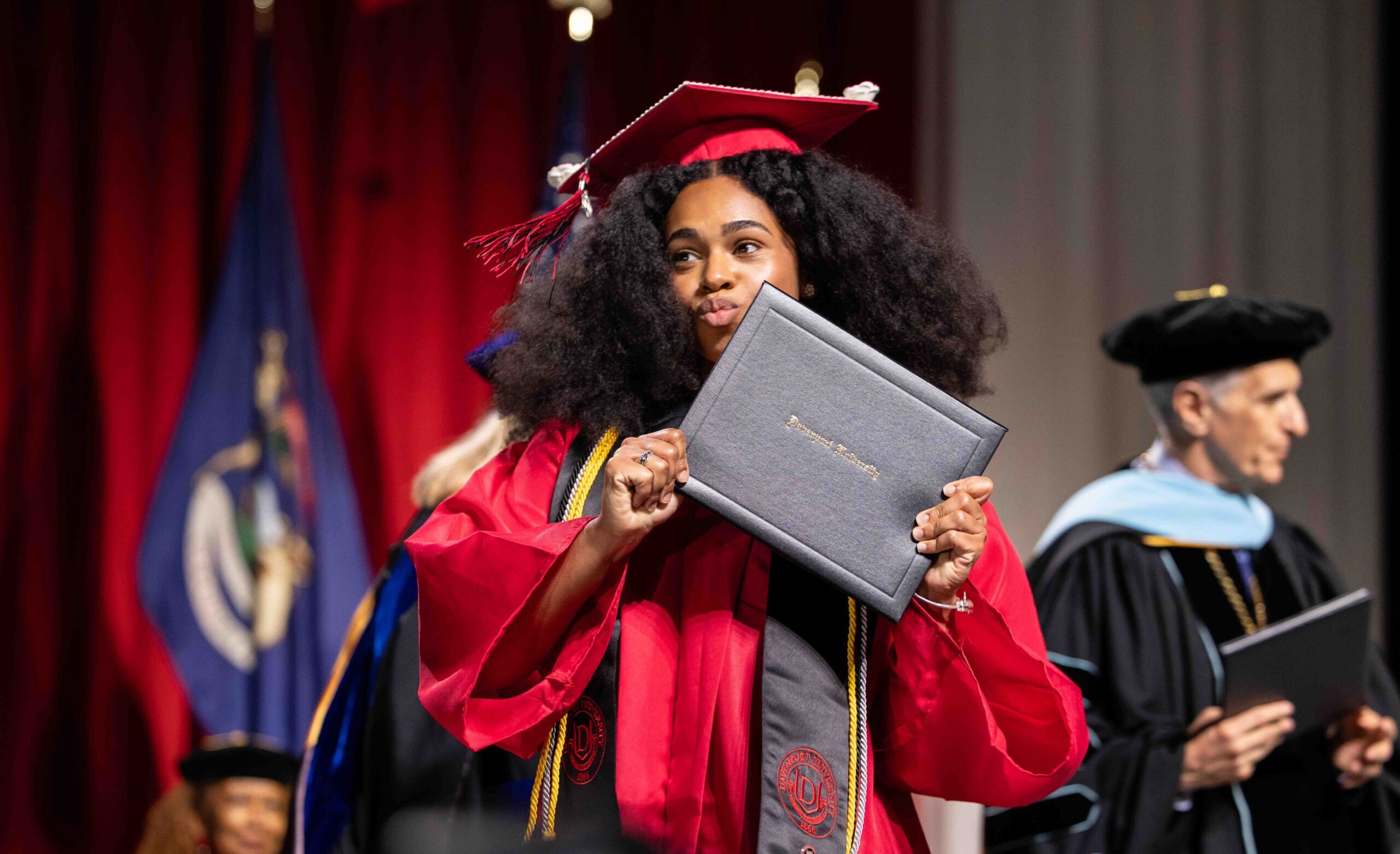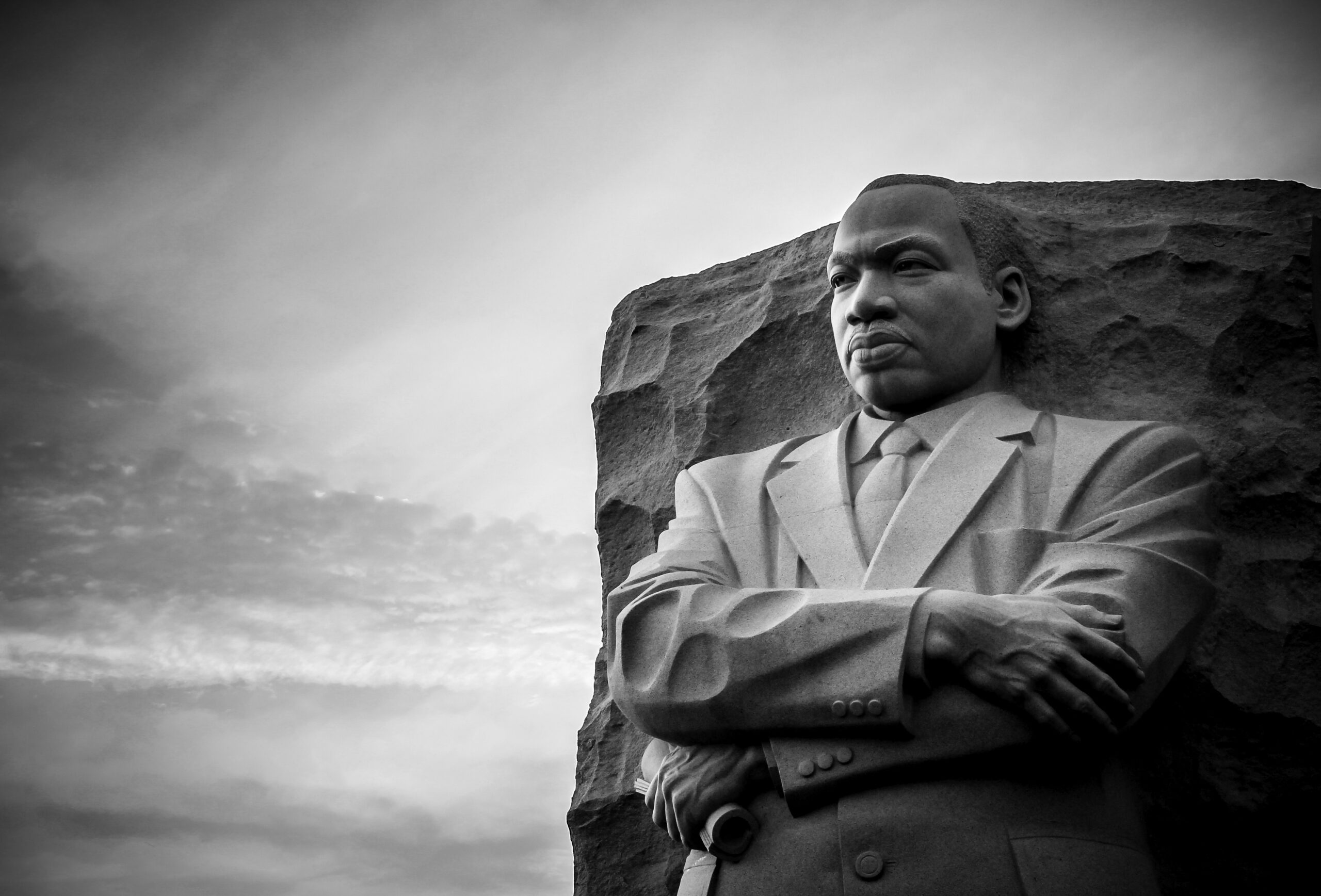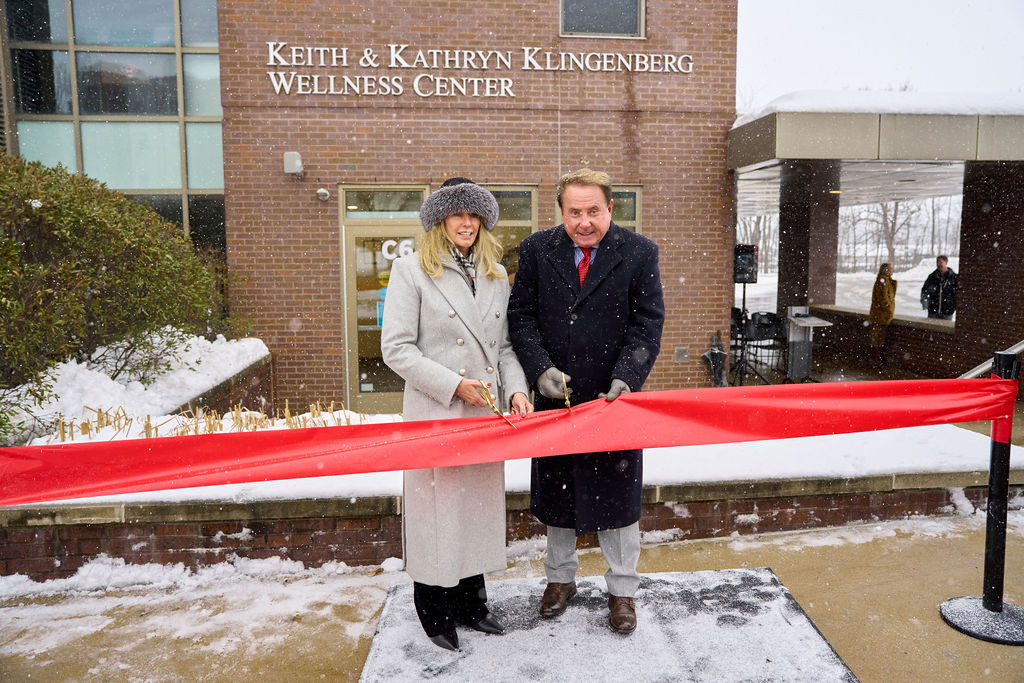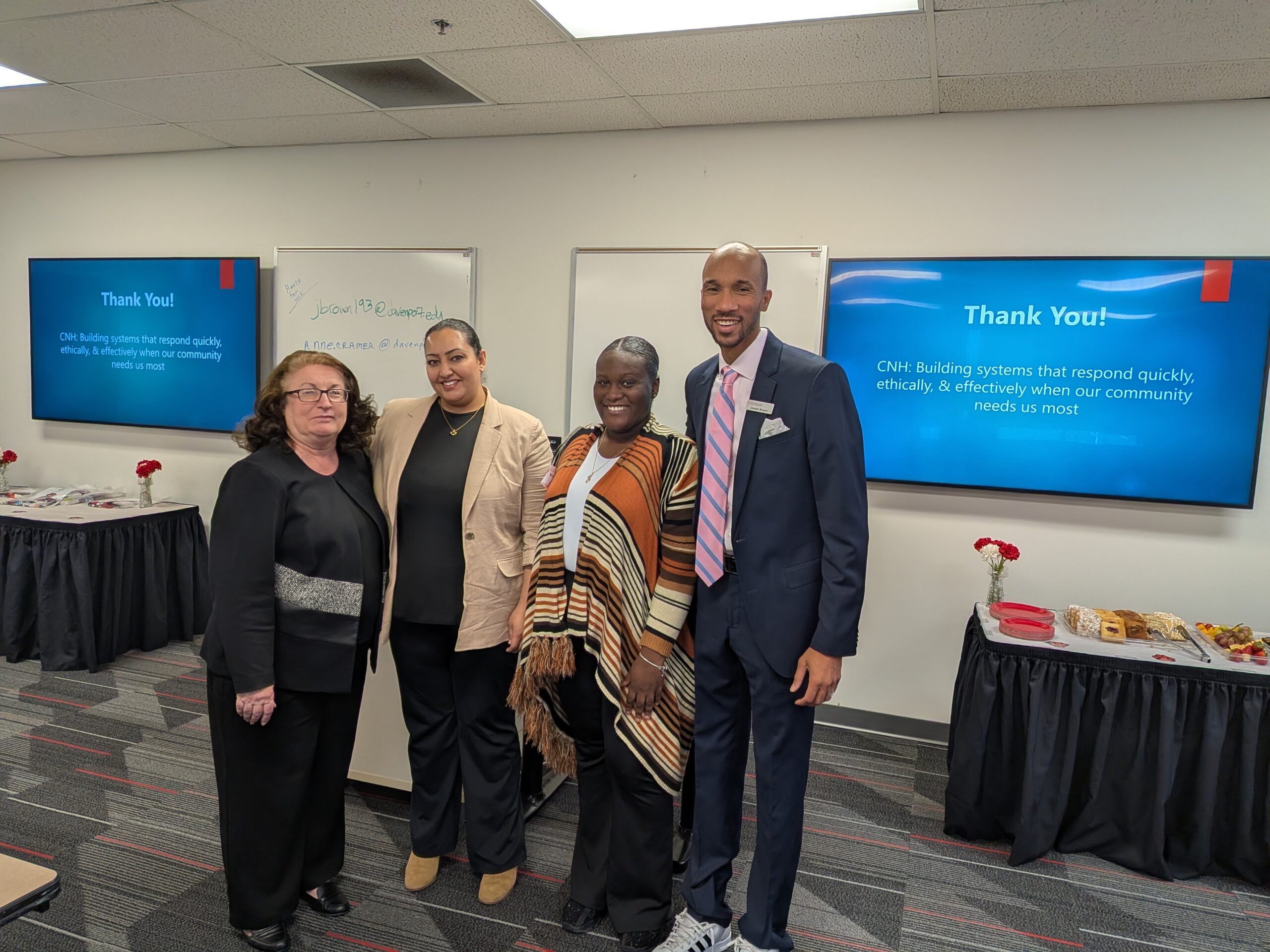When Todd Pitts, associate professor of management for Davenport University, accepted the faculty athletics representative (FAR) role 22 years ago, he had no idea what to expect, how the role would evolve or how much he would grow to love the position.
In 2002, the administration, working with Paul Lowden, executive director of intercollegiate athletics, was taking steps to “restore the roar” of Davenport’s athletic program after a 20-year absence. They started by introducing men’s hockey and women’s basketball.
One requirement of the National Association of Intercollegiate Athletics was to create the FAR role to serve as a liaison between faculty and the Athletic Department. This checks-and-balances system ensures that Athletics is under the control of the university and that participants are treated as students first and athletes second.
University leaders tasked the Academic Department with identifying a qualified individual to fill this new role, and Pitts’ name quickly rose to the top of the list.
“They told me I’d be a perfect fit for the position, partially because I had been a college athlete myself,” said Pitts. “I was a fairly new faculty member at the time, so I said ‘yes’ primarily because I didn’t want to disappoint anyone. I was honored, but I really had no idea what the job entailed; I don’t think anyone did.”
 When he accepted the position, Davenport had two athletic teams and a total of 28 student-athletes, so the task didn’t seem too daunting. Pitts said he thought to himself, “Two sports and a handful of student-athletes, how hard can this be?” He soon learned that the FAR role was more complex and more important than anyone originally thought.
When he accepted the position, Davenport had two athletic teams and a total of 28 student-athletes, so the task didn’t seem too daunting. Pitts said he thought to himself, “Two sports and a handful of student-athletes, how hard can this be?” He soon learned that the FAR role was more complex and more important than anyone originally thought.
The FAR is responsible for three key components: ensuring the well-being of student-athletes, overseeing the academic integrity of the athletics program and ensuring institutional control of the program.
Helping to ensure the well-being of Davenport’s student-athletes is a responsibility Pitts takes seriously. If a student-athlete is struggling in class, having personal issues or facing a mental health challenge, he steps in to support them. Often, this involves looping in Student Life, the Wellness Center and other departments to help student-athletes work through challenges.
Pitts must also see to it that students adhere to three key expectations in order to ensure the academic integrity of the athletics program. They must understand that they are students first, athletes second, and not the other way around. They must also represent the university in a positive light and recognize that athletic participation is a privilege, not a right. “During team meetings, I talk about my role and make sure every athlete understands what is expected of them and that they know they can come to me with concerns,” said Pitts.
When it comes to ensuring institutional control of the athletics program, Pitts credits Davenport President Richard J. Pappas for taking a proactive approach to ensure that the athletic program follows the rules set forth by the NCAA and other governing bodies.
Executive Vice President for Academics and Provost Gilda Gely believes the support of the FAR is essential in ensuring that students who participate in sports are well cared for. “Todd offers mentorship and supervision and designs programs that build accountability, resilience and lifelong learning among student-athletes,” she said. “He advocates for them on every level and continues to instill the values of discipline, integrity and perseverance that define success on and off the field.”
Pitts still can’t believe it has been 22 years since he took on the role and can’t help but reflect on everything that has changed.
Today, Davenport has a total of more than 1,000 student-athletes competing in 44 sports, 23 of which are affiliated with NCAA Division II and the Great Lakes Intercollegiate Athletic Conference.
Pitts said the tremendous growth is due in large part to the efforts of two men: Pappas and Lowden. “Paul was instrumental in developing and adding sports to the program,” said Pitts. “When President Pappas initiated the transition to the NCAA, it was a monumental step for Davenport because it began to attract more talented athletes who were also more prepared to succeed in the classroom.”
One more person played a vital role in building Davenport’s athletic program, and according to Lowden, that person is Pitts. “Todd has been an integral part of the overall success of Davenport athletics. He provides oversight and insight on matters affecting intercollegiate athletics, and I’m thankful for his dedication. I consider Todd an inspirational leader, a devoted colleague and a great friend.”
It’s true that the FAR position is nothing like what Pitts originally envisioned, and he’s grateful for that because he enjoys helping Davenport student-athletes reach their full potential in the classroom and on the field. “I love working with our student-athletes and going to their games. It’s also a lot of fun to have them in class and then watch them play. They know they can come to me with any of their concerns, and that’s really special.”
Share This Story!
When Todd Pitts, associate professor of management for Davenport University, accepted the faculty athletics representative (FAR) role 22 years ago, he had no idea what to expect, how the role would evolve or how much he would grow to love the position.
In 2002, the administration, working with Paul Lowden, executive director of intercollegiate athletics, was taking steps to “restore the roar” of Davenport’s athletic program after a 20-year absence. They started by introducing men’s hockey and women’s basketball.
One requirement of the National Association of Intercollegiate Athletics was to create the FAR role to serve as a liaison between faculty and the Athletic Department. This checks-and-balances system ensures that Athletics is under the control of the university and that participants are treated as students first and athletes second.
University leaders tasked the Academic Department with identifying a qualified individual to fill this new role, and Pitts’ name quickly rose to the top of the list.
“They told me I’d be a perfect fit for the position, partially because I had been a college athlete myself,” said Pitts. “I was a fairly new faculty member at the time, so I said ‘yes’ primarily because I didn’t want to disappoint anyone. I was honored, but I really had no idea what the job entailed; I don’t think anyone did.”
 When he accepted the position, Davenport had two athletic teams and a total of 28 student-athletes, so the task didn’t seem too daunting. Pitts said he thought to himself, “Two sports and a handful of student-athletes, how hard can this be?” He soon learned that the FAR role was more complex and more important than anyone originally thought.
When he accepted the position, Davenport had two athletic teams and a total of 28 student-athletes, so the task didn’t seem too daunting. Pitts said he thought to himself, “Two sports and a handful of student-athletes, how hard can this be?” He soon learned that the FAR role was more complex and more important than anyone originally thought.
The FAR is responsible for three key components: ensuring the well-being of student-athletes, overseeing the academic integrity of the athletics program and ensuring institutional control of the program.
Helping to ensure the well-being of Davenport’s student-athletes is a responsibility Pitts takes seriously. If a student-athlete is struggling in class, having personal issues or facing a mental health challenge, he steps in to support them. Often, this involves looping in Student Life, the Wellness Center and other departments to help student-athletes work through challenges.
Pitts must also see to it that students adhere to three key expectations in order to ensure the academic integrity of the athletics program. They must understand that they are students first, athletes second, and not the other way around. They must also represent the university in a positive light and recognize that athletic participation is a privilege, not a right. “During team meetings, I talk about my role and make sure every athlete understands what is expected of them and that they know they can come to me with concerns,” said Pitts.
When it comes to ensuring institutional control of the athletics program, Pitts credits Davenport President Richard J. Pappas for taking a proactive approach to ensure that the athletic program follows the rules set forth by the NCAA and other governing bodies.
Executive Vice President for Academics and Provost Gilda Gely believes the support of the FAR is essential in ensuring that students who participate in sports are well cared for. “Todd offers mentorship and supervision and designs programs that build accountability, resilience and lifelong learning among student-athletes,” she said. “He advocates for them on every level and continues to instill the values of discipline, integrity and perseverance that define success on and off the field.”
Pitts still can’t believe it has been 22 years since he took on the role and can’t help but reflect on everything that has changed.
Today, Davenport has a total of more than 1,000 student-athletes competing in 44 sports, 23 of which are affiliated with NCAA Division II and the Great Lakes Intercollegiate Athletic Conference.
Pitts said the tremendous growth is due in large part to the efforts of two men: Pappas and Lowden. “Paul was instrumental in developing and adding sports to the program,” said Pitts. “When President Pappas initiated the transition to the NCAA, it was a monumental step for Davenport because it began to attract more talented athletes who were also more prepared to succeed in the classroom.”
One more person played a vital role in building Davenport’s athletic program, and according to Lowden, that person is Pitts. “Todd has been an integral part of the overall success of Davenport athletics. He provides oversight and insight on matters affecting intercollegiate athletics, and I’m thankful for his dedication. I consider Todd an inspirational leader, a devoted colleague and a great friend.”
It’s true that the FAR position is nothing like what Pitts originally envisioned, and he’s grateful for that because he enjoys helping Davenport student-athletes reach their full potential in the classroom and on the field. “I love working with our student-athletes and going to their games. It’s also a lot of fun to have them in class and then watch them play. They know they can come to me with any of their concerns, and that’s really special.”
Share This Story!
Stay connected!
Get the latest Davenpost News delivered to your inbox!
Related Stories
In January 2018, Davenport University is introducing a new bachelor’s degree supporting the needs of Michigan employers seeking to fill [...]
Davenport University will celebrate the class of 2025 at its Commencement ceremony on Sunday, April 27 at Van Andel Arena [...]
On Wednesday, April 12, members of the DU administration, students, staff, and faculty from across the state joined together at [...]
Latest Stories
Davenport University partners with Grand Valley State University and Grand Rapids Community College on the community-wide MLK day celebration on [...]
Davenport President Richard J. Pappas addresses attendees. Davenport University leaders, trustees, employees and guests gathered December 10 on [...]
Pictured from left to right: Susan Crkovski, executive campus director-Warren; Davenport student Jeryn Washington, BSN Pre-Licensure program; Davenport student Manar [...]

